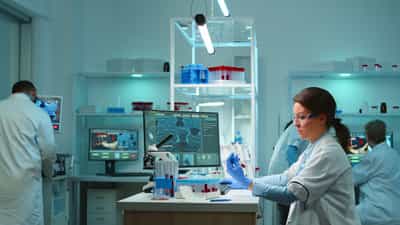
The Origin of Impurities in Pharma
Impurities During Drug Formulation – Actual Content
Impurities may emerge due to the manufacturing methods employed or the environmental conditions under which the drugs are produced.
- Method-Related Impurities: These arise from specific techniques or equipment used during manufacturing, such as autoclaving, where residual compounds or by-products may be introduced.
- Environment-Related Impurities: Exposure to unsuitable environmental conditions—like extreme temperatures, UV light, or high humidity—can cause degradation or contamination of the drug product.
The dosage form of a drug also plays a role in impurity formation. For instance, liquid dosage forms are more prone to microbial contamination than solid forms and typically have shorter shelf lives. Additionally, impurities may form due to the chemical degradation of the drug over time, influenced by factors like:
- Ester hydrolysis
- Oxidative degradation
- Photolytic cleavage
- Decarboxylation
These processes lead to the formation of undesired by-products, which not only reduce the drug’s purity but may also compromise its therapeutic effectiveness and safety.
Types of Impurities
1. Organic Impurities
Organic impurities are the most prevalent and primarily originate from the drug production process.
- Sources:
- Incomplete separation of the drug substance from starting materials or intermediates used during synthesis.
- By-products formed during pharmaceutical synthesis, if not removed entirely, can also become impurities.
- Degradation of the drug over time, especially in the presence of functional groups susceptible to chemical reactions.
- For chiral compounds, the presence of unwanted stereoisomers contributes to organic impurities.
Impact: These impurities pose a significant challenge, as they can interfere with the drug’s intended action and may lead to adverse effects in patients.
2. Inorganic Impurities
Inorganic impurities, although easier to control, can still emerge during the manufacturing process.
- Sources:
- Residual reagents, ligands, or catalysts used in the synthesis process.
- Heavy metals introduced via reaction vessels, water, or other raw materials.
- Other materials like filter aids, which may inadvertently contaminate the final product.
Prevention: These impurities can be mitigated through measures like:
- Using demineralized water during synthesis.
- Employing glass-lined reaction vessels to minimize contamination.
- Regularly monitoring each production stage for potential contamination.
3. Residual Solvent Impurities
Residual solvents are remnants of the solvents used during drug manufacturing, which may persist in the final product if not adequately removed.
- Health Risks:
- Solvents are categorized based on their toxicity, with strict regulatory limits on daily exposure levels. Only the safest solvents are approved for pharmaceutical use.
- Control Measures:
- Advanced purification techniques ensure that solvent levels remain well within permissible limits to minimize risks to patient health.
Ensuring Purity in Pharmaceuticals: Reducing Impurities
To minimize impurities in pharmaceutical products, manufacturers employ various preventive measures. These include the use of appropriate packaging materials and controlled storage conditions to protect drugs from environmental factors such as moisture, light, and heat. Additionally, careful washing and drying of products at every stage of formulation helps limit contamination.
However, while these methods are effective in reducing the occurrence of impurities, they cannot entirely eliminate the risk of contamination. Achieving maximum purity requires continuous research into impurity formation and behaviour to develop more advanced techniques and best practices. This ongoing effort ensures that drugs meet the highest safety and efficacy standards for patient health.
Conclusion
The origin of impurities in pharmaceuticals underscores the complexity of drug manufacturing and the importance of stringent quality control measures. From organic by-products to inorganic contaminants and residual solvents, each type of impurity requires careful monitoring and prevention strategies to ensure drug safety and efficacy. By understanding the sources and formation mechanisms of these impurities, pharmaceutical manufacturers can implement targeted solutions, safeguarding the quality of medicines and the well-being of patients worldwide.
To explore how ISP STANDARDS supports this critical aspect of pharmaceutical development—through advanced detection and synthesis capabilities—click Read More to view our Detection and Synthesis Services.- Open into
RELATED PROJECTS
 Blog
Blog
Nitrosamine Impurities – Concern of the Time
The term nitrosamine describes a class of compounds having the chemical structure of a nitroso group bonded to an amine...
 Blog
Blog
Don’t ignore the small peaks. Tackle impurities now.
The overall aim of the pharmaceutical industry is to produce drugs that give the maximum desired effect with minimum side...
 Blog
Blog
Detection, synthesis and analysis of pharmaceutical impurities
Detection, synthesis and analysis of pharmaceutical impuritiesIdentifying impurities is the first step in preventing them. By elucidating the structure of...
